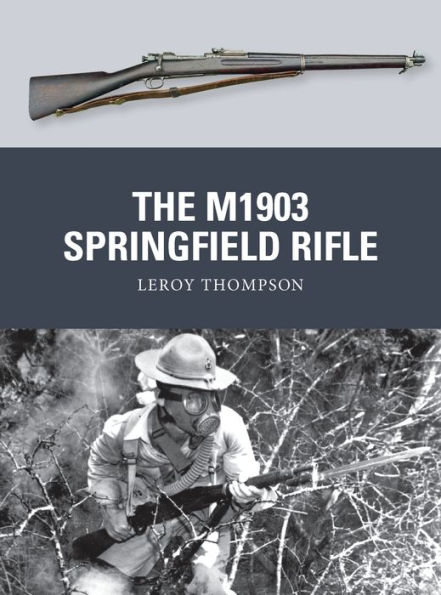During World War I, US troops developed a formidable reputation for marksmanship aided by the accuracy of the M1903 Springfield, which was widely used in that conflict alongside the Pattern 1917 Enfield. World War II saw the introduction of the M1903A3, which changed the rear sight so that it was closer to that of the M1 Garand, to allow easier training of troops who might be issued either rifle. The M1903A4 sniper version was used during World War II and later. Many infantry squads that were equipped with the Garand also had at least one "grenadier" who retained an '03 for launching rifle grenades.
Illustrated with specially commissioned color artwork and drawing upon veterans' recollections, this is the engaging story of the M1903 Springfield, an iconic rifle prized for its lethal accuracy that equipped US and other troops for much of the 20th century.
During World War I, US troops developed a formidable reputation for marksmanship aided by the accuracy of the M1903 Springfield, which was widely used in that conflict alongside the Pattern 1917 Enfield. World War II saw the introduction of the M1903A3, which changed the rear sight so that it was closer to that of the M1 Garand, to allow easier training of troops who might be issued either rifle. The M1903A4 sniper version was used during World War II and later. Many infantry squads that were equipped with the Garand also had at least one "grenadier" who retained an '03 for launching rifle grenades.
Illustrated with specially commissioned color artwork and drawing upon veterans' recollections, this is the engaging story of the M1903 Springfield, an iconic rifle prized for its lethal accuracy that equipped US and other troops for much of the 20th century.

The M1903 Springfield Rifle
80
The M1903 Springfield Rifle
80
Product Details
| ISBN-13: | 9781780960111 |
|---|---|
| Publisher: | Bloomsbury USA |
| Publication date: | 02/19/2013 |
| Series: | Weapon , #23 |
| Pages: | 80 |
| Product dimensions: | 7.20(w) x 9.50(h) x 0.30(d) |
